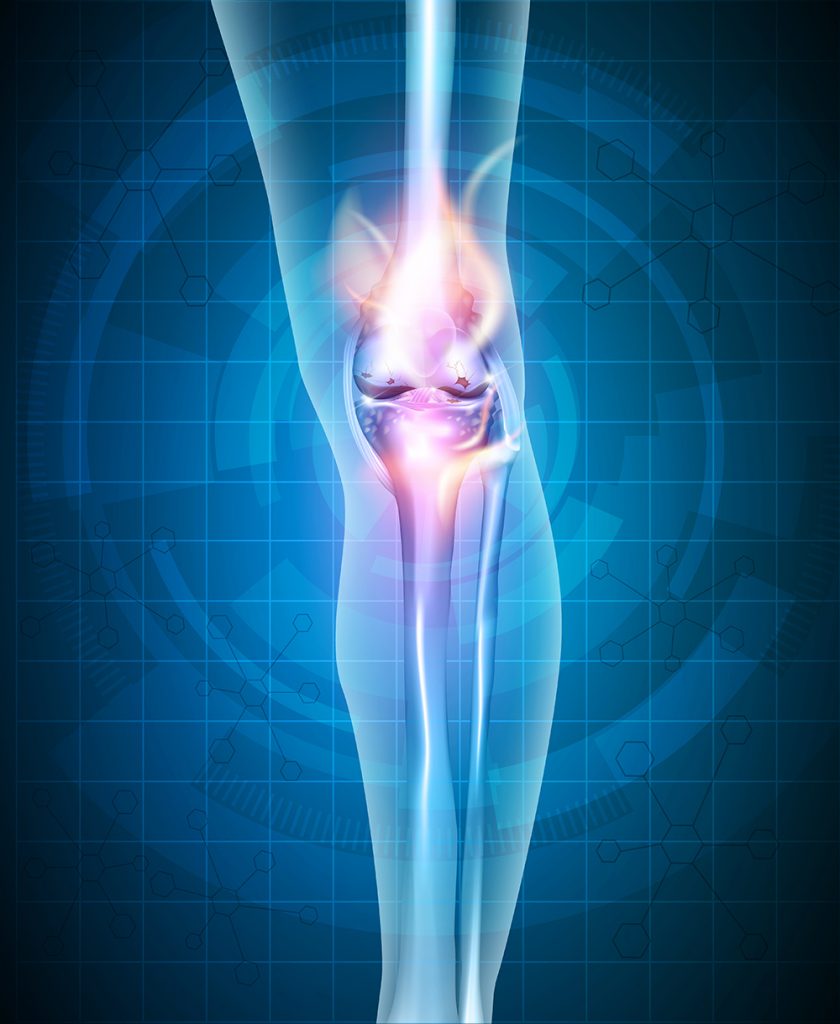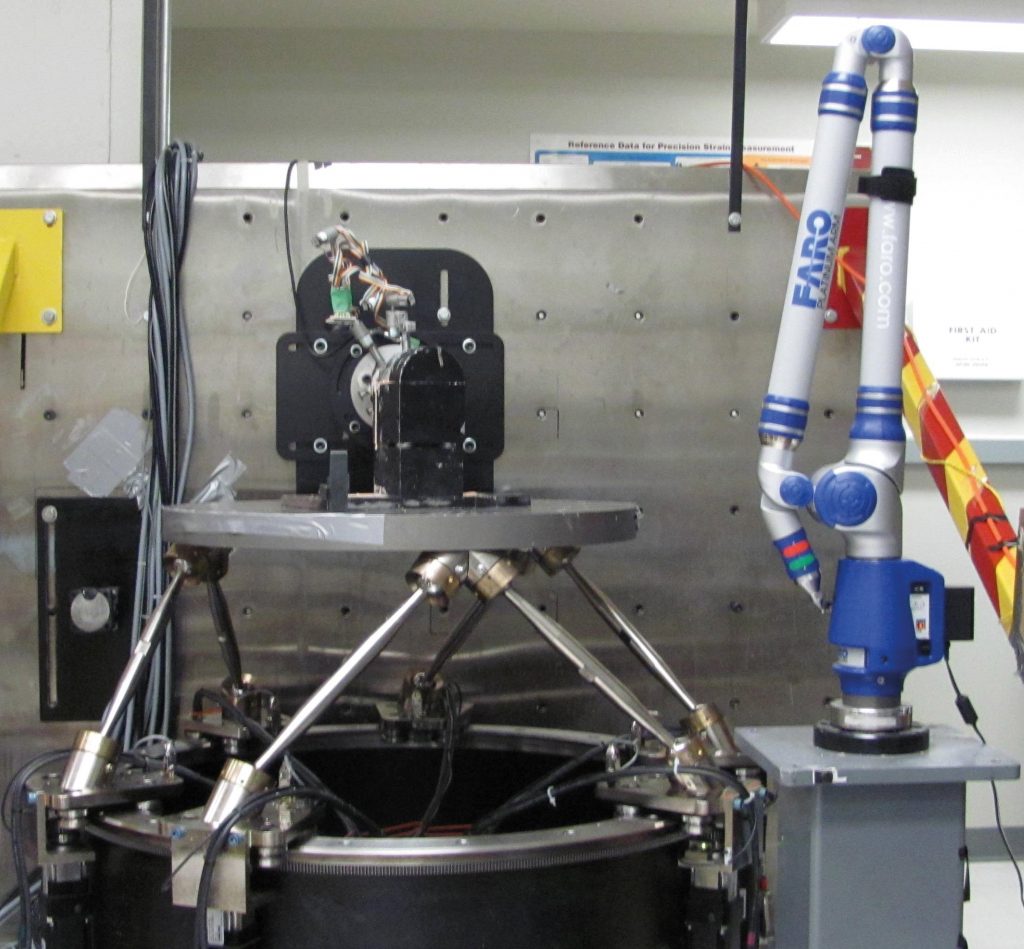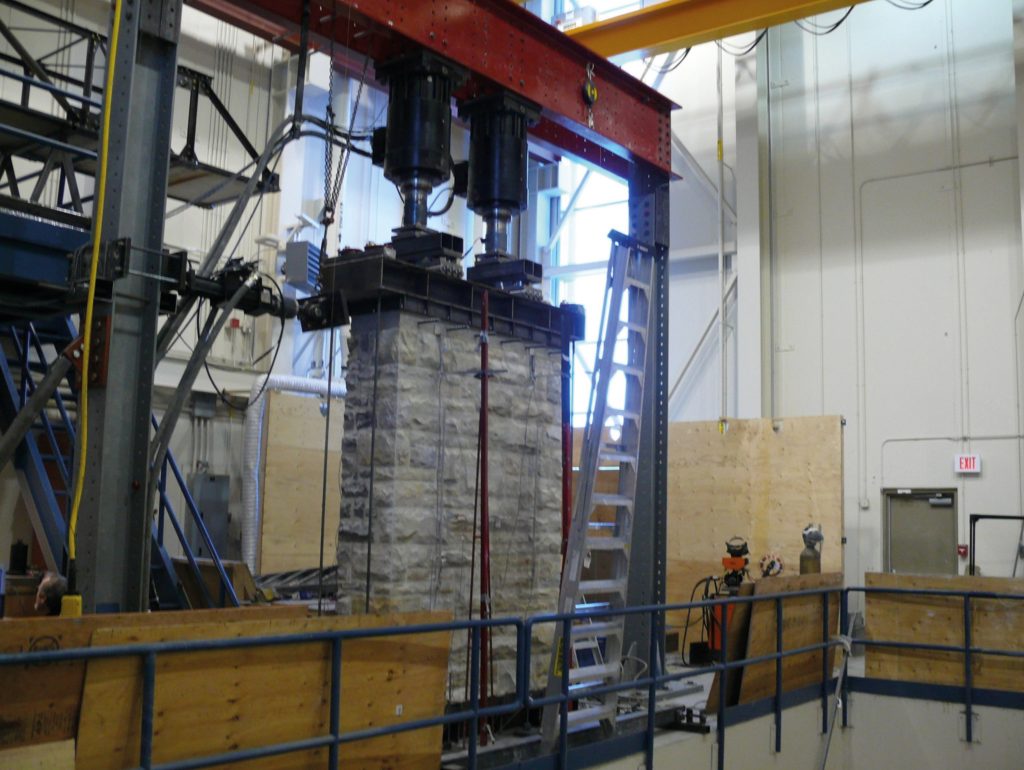Dr Nigel Shrive – Joints, Ventricles and Historical Buildings: A Diverse Career with Structural Mechanics
Engineering mechanics can provide medical researchers with invaluable insights into the diverse mechanisms contained within the human body, and the conditions that arise when they go wrong. Over a career spanning four decades, Dr Nigel Shrive at the University of Calgary has offered significant contributions to this field. His research is now helping to improve the lives of many millions of people who are currently suffering from mechanical failure within the body. Elsewhere, his work has also enabled countries to protect their priceless historical heritage.
A Sophisticated Machine
As one of the most sophisticated mechanical structures known to science, the human body exploits a diverse and complex array of systems to keep itself functioning in Earth’s gravitational field. For most of us, a vast majority of these systems run so smoothly that we don’t even consciously perceive them. However, with such uncertainty regarding the forces our bodies experience each day, and with so many processes playing out simultaneously, it is inevitable that some of them will occasionally go wrong, particularly as we age.
From joint pain to heart failure, anatomists have now spent centuries studying how the failure of certain biological mechanisms can give rise to our most unwanted ailments. Recently, the emergence of advanced new technology has provided researchers with unprecedented opportunities to study and correct these problems through surgery and artificial implants.
In each of these situations, however, there are numerous hurdles to overcome before patients can return to their normal lives. In collaboration with medical colleagues, Dr Nigel Shrive at the University of Calgary explores innovative new ways to assess and treat various conditions, paying particular attention to tissues and joints, and the heart. The results of his basic-translational approach have led to several changes in clinical practice.
Failure in a Complex Mechanism
Our joints are among the most intricate mechanical structures in our bodies. To enable the ends of our bones to comfortably glide over each other, they are coated in smooth, rubber-like cartilage, surrounded by a lubricating synovial fluid, and tied to surrounding muscles through complex networks of tendons and ligaments. Yet as many people know all too well, there is much that can go wrong with the functioning of this complex apparatus. Clearly, a joint operates as an organ, an engineering system.
Among a variety of painful joint-related conditions is osteoarthritis, which commonly emerges in patients after an injury to their joints. The disease is now known to result from a breakdown in bone and cartilage in the joints, which can cause symptoms including pain, stiffness, swelling, and a loss of motion.
Currently, osteoarthritis affects as many as one in six Canadians, and costs the nation’s economy as much as 30 billion Canadian dollars each year. However, even with the latest advances in medical science, the current treatments on offer are severely limited in their ability to completely relieve patients of their life-altering symptoms, and repairing the damaged tissue is a mere hope. Alleviating this problem will require an in-depth knowledge of the functions of each of the tissues involved, how they respond to injury, and how they can best be repaired.

Assessing Joints After Injury
In a study published in 2004, Dr Shrive and his colleagues assessed the validity of a common idea regarding joint restoration: that in order to restore joint function, damaged tissues should be replaced with undamaged, ‘normal’ substitutes.
Through experiments, the multidisciplinary team showed that in many cases, ‘less-than-normal’ substitute tissues are better suited to the task. This is because each individual tissue in the joint has its own genetic and biological ability to adapt and remodel itself after an injury, in order to accommodate the changing biomechanical needs of the healing body. The team suggested that if these widely varied responses of different joint components are not accounted for, any normal replacement tissues will ultimately come to face a far heavier share of the joint’s workload, increasing the risk of another failure. In the joint ‘organ system’, each component has to function adequately for the system to retain optimal operation.Through a further 2015 study, Dr Shrive and his colleagues examined how injury can result in changes to the properties of lubricating synovial fluid. Normally, the fluid contains a finely balanced mixture of protein molecules, but this composition can be profoundly altered by any disturbance resulting from injury.
Through their experiments, the team found that after injury, the concentrations of one of its important proteins became substantially higher than normal, while another dropped to far lower levels. This resulted in changes to the fluid’s lubrication properties, which accelerated the degradation of cartilage over time, increasing friction between bones.
Advanced Robotics
Having gained a detailed knowledge of the biomechanical systems that joints use to function, and what happens when they fail, Dr Shrive and his colleagues used a robotic system to assess the mechanics of knee joints with pinpoint accuracy. Few previous studies had attempted to reproduce such artificial mechanics in the lab, since it was very difficult in the past to reproduce accurate motions in response to specific forces. However, through the latest advances in robotics, the researchers built a system that could move in a full range of 3D motions, and could rotate in any direction.Key to the accuracy of this system was a computational technique that closely tracked the motions of the robotic system, and adjusted them to become more realistic if they strayed off track. Through their tests, Dr Shrive’s team reproduced the gait patterns of living sheep to within an accuracy of less than 1 millimetre, allowing them to compare the behaviours of individual tissues within their joints. The recent application of fibre optic technology in combination with the robotics has provided more unique information on joint functioning.
Through the success of this approach, the team’s work could soon inform innovative new surgical techniques for reconstructing joints artificially. It may also allow researchers to identify new potential causes of osteoarthritis, which may lead to better treatments of the disease.

The robotic test system.
Pressure Overload in the Heart
Elsewhere in the body, the heart is another organ whose behaviour is dominated by complex mechanical processes, such as the interplay between the forces imparted by pumping muscle and the fluid dynamics of blood. In a study published in 2006, Dr Shrive and his cardiovascular colleagues examined the behaviour of the heart’s ‘septum’, which separates the right ventricle (responsible for pumping blood to the lungs to become oxygenated) from the left ventricle (which pumps oxygenated blood around the body).
At the time, researchers believed that this wall becomes deformed when the pulmonary artery is constricted. In turn, blood flow to the coronary artery becomes restricted, blocking the blood supply of the heart muscle itself. Due to the complexity of this process, it was very difficult for researchers to confirm this relationship through experiments.
The team solved the issue using a computer modelling technique, which breaks down complex systems into large sets of small, interacting parts – greatly simplifying their dynamics. Through these simulations, in combination with experiments, the researchers confirmed the relationship between septum deformation and pulmonary artery constriction for the first time. Their results also helped to explain why some patients with high blood pressure but no underlying heart conditions can experience angina-like chest pains.
New Assessments of Circulation
Through their latest research, the team has developed a general approach for understanding how blood flows, which he believes provides a much-needed update to decades of misguided theories. Their ‘Reservoir-Wave Approach’ differentiates between two separate aspects of flowing blood: one related to the volume of the fluid; and the other, to the wave patterns it displays. Through experiments incorporating this approach, the team has provided potential new solutions to some phenomena that have long mystified medical researchers.
Among these insights is a potential answer to the exact function of the septum, and how changes to its behaviour can trigger angina in some circumstances. The Reservoir-Wave Approach could also help to explain why we don’t faint when we stand up quickly after lying down, even though the flow of blood to the brain is suddenly restricted. In addition, it could provide researchers with a far more complete toolset for exploring the nature of the complex interactions that take place between flowing blood, and the solid structure of the heart.

A wall in the in-plane test rig.
Protecting Historical Heritage
Alongside these important discoveries, Dr Shrive has also applied his expertise in a completely different area: protecting vulnerable historical buildings made from brick and stone. On the Canadian government’s request, he helped to assess the Federal Parliament Buildings in Ottawa, which are seen by many as an irreplaceable piece of the nation’s heritage. At the time, authorities had decided that the buildings needed to be strengthened to withstand earthquakes so strong as to occur just once in around 2,500 years.
Through their analysis and testing, Dr Shrive and his colleagues determined that the structures are less flexible than more modern buildings. Unlike the latest materials, the brick and stone that make up the Parliament Buildings move in parallel to the motions of materials lower down – a behaviour that physicists call ‘shearing’.
This result provided authorities with invaluable information regarding where repairs needed to be made to preserve the buildings, while avoiding costly, unnecessary maintenance. The group’s predictions were then put to the ultimate test in 2010, when Ottawa was struck by a magnitude 5 earthquake. Just as they had calculated, the Parliament Buildings remained completely unscathed following the event.
Inspiring a New Generation
Throughout his 40-year career, Dr Shrive has provided researchers with a wealth of new insights into the mechanical forces at play in biological systems, and beyond. His discoveries ultimately culminated in the founding of the company Tenet Medical Engineering, which produced innovative equipment for improving the outcomes of orthopaedic surgery across Canada, sold equipment in over 50 countries worldwide, and has now been bought by a multinational.
Dr Shrive now hopes that his work will inspire a new generation of engineers, who will build upon his research to push the field of mechanical engineering in its many diverse forms.
Reference
https://doi.org/10.33548/SCIENTIA514
Meet the researchers
Dr Nigel Shrive
Department of Civil Engineering
University of Calgary
Calgary, Alberta
Canada
Dr Nigel Shrive completed his D.Phil. at Oxford University in 1974 where he invented ‘The Oxford Knee’, and has since worked at the University of Calgary for over 40 years. With research interests including the application of structural mechanics to masonry and heritage structures, and investigations of the mechanics of cells, tissues, joints, and the cardiovascular system, he is now a distinguished leader in the fields of both civil and biomechanical engineering. Elsewhere, Dr Shrive has promoted international collaboration between research teams in each of these disciplines, and has also focused on developing highly regarded mentorship schemes, creating one of the top graduate programs at the University of Calgary. He has been an elected Fellow of the Institution of Civil Engineers, UK, the Canadian Society for Civil Engineering, the Masonry Society, the Canadian Academy of Engineering, Engineers Canada and The Royal Society of Canada.
E: ngshrive@Ucalgary.ca
W: https://schulich.ucalgary.ca/contacts/nigel-shrive
KEY COLLABORATORS
Dr Cyril Frank, Department of Surgery, University of Calgary (now deceased)
Dr David Hart, Department of Surgery, University of Calgary
Dr John Tyberg, Cardiac Sciences and Physiology, University of Calgary
FUNDING
Canadian Institutes of Health ResearchThe Arthritis Society
Natural Sciences and Engineering Research Council of Canada Canadian Concrete Masonry Producers Association
The Canada Foundation for Innovation
FURTHER READING
P Vakiel, M Shekarforoush, C Dennison, M Scott, CB Frank, DA Hart, NG Shrive, Stress Measurements on the Articular Cartilage Surface Using Fiber Optic Technology and in-vivo Gait Kinematics: Annals of biomedical engineering, pub on line April, 2020
S Howell, LM Burrowes, I Belenkie, HE ter Keurs, L Lei, SR Raj, JC Bouwmeester, RS Sheldon, NG Shrive, JV Tyberg, Alternative Approaches to the Assessment of the Systemic Circulation and Left Ventricular Performance: A Proof-of-Concept Study, CJC Open, 2019, 1, 84.
M Atarod, TE Ludwig, CB Frank, TA Schmidt, NG Shrive, Cartilage boundary lubrication of ovine synovial fluid following anterior cruciate ligament transection: a longitudinal study, Osteoarthritis and cartilage, 2015, 23, 640.
M Atarod, JM Rosvold, CB Frank, NG Shrive, A novel testing platform for assessing knee joint mechanics: a parallel robotic system combined with an instrumented spatial linkage, Annals of biomedical engineering, 2014, 42, 1121.
JV Tyberg, JC Bouwmeester, KH Parker, NG Shrive, JJ Wang, The case for the reservoir-wave approach, International journal of cardiology, 2014, 172, 299.
CA Gibbons Kroeker, S Adeeb, NG Shrive, JV Tyberg, Compression induced by RV pressure overload decreases regional coronary blood flow in anesthetized dogs, American Journal of Physiology-Heart and Circulatory Physiology, 2006, 290, H2432.
CB Frank, NG Shrive, RS Boorman, IKY Lo, DA Hart, New perspectives on bioengineering of joint tissues: joint adaptation creates a moving target for engineering replacement tissues, Annals of biomedical engineering, 2004, 32, 458.

Creative Commons Licence
(CC BY 4.0)
This work is licensed under a Creative Commons Attribution 4.0 International License. 
What does this mean?
Share: You can copy and redistribute the material in any medium or format
Adapt: You can change, and build upon the material for any purpose, even commercially.
Credit: You must give appropriate credit, provide a link to the license, and indicate if changes were made.
More articles you may like
Grandmothers: Innovation Through Tradition
Grandmother Project – Change through Culture (GMP) is an organisation dedicated to documenting the role of grandmothers and demonstrating the effectiveness of grandmother-inclusive strategies in improving the health and well-being of women, children, and adolescents. GMP’s groundbreaking work challenges conventional wisdom to transform community-based interventions in Africa and beyond, harnessing a powerful but often overlooked resource: the wisdom and influence of grandmothers.
Dr Robert Larkin | Cultivating Change to Improve Soil Health and Increase Potato Yield
Environmental quality and food production are facing the pressing challenges of climate change and global population growth. Dr Robert Larkin from the United States Department of Agriculture-Agricultural Research Service (USDA-ARS) and a team of plant scientists developed and tested a range of crop management systems to help overcome these compounding challenges. Their work is improving soil health and increasing the yield of potato crops, contributing to the future food security of nations.
Professor Giorgio Buttazzo | Artificial Intelligence and a Crossroads for Humanity
Where do we stand with artificial intelligence? Might machines take over our jobs? Can machines become conscious? Might we be harmed by robots? What is the future of humanity? Professor Giorgio Buttazzo of Scuola Superiore Sant’Anna is an expert in artificial intelligence and neural networks. In a recent publication, he provides considered insights into some of the most pressing questions surrounding artificial intelligence and humanity.
Dr Ralf Adam | New Technologies Shaping the Future of Oral Hygiene
Understanding the efficiency of various toothbrush technologies is essential for achieving optimal oral health. Dr Ralf Adam, who leads a dedicated team at Procter & Gamble in Germany, is keen to investigate the complexities of these technologies. His team have provided new insights into the best toothbrush types for plaque removal and the maintenance of gum health. By highlighting the importance of informed oral care decisions and ongoing investigations, this vital research works towards ensuring everyone can achieve a brighter, healthier smile.




